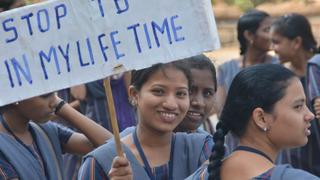
Research shows TB is among the leading causes of morbidity and mortality worldwide, and more than 70% of TB deaths occur in the first two months of TB treatment.
| Photo Credit: The Hindu Photo Library
To reduce the average time from diagnosis to hospital admission for severely ill tuberculosis (TB) patients, Tamil Nadu has become the first State in the country to integrate a model that predicts the possibility of TB deaths among patients with the existing State-wide application which screens them at diagnosis.
The predictive model, developed by the Indian Council of Medical Research (ICMR)-National Institute of Epidemiology (NIE) and launched last week, will aid the State in bringing down the TB mortality rate, Asha Frederick, State TB Officer, Tamil Nadu, said.
The predictive death model has been developed using data from nearly 56,000 TB patients diagnosed in public health facilities across Tamil Nadu between July 2022 and June 2023, Dr. Frederick said.
Research shows TB is among the leading causes of morbidity and mortality worldwide, and more than 70% of TB deaths occur in the first two months of treatment.
Globally, India has the highest burden of TB, with two deaths occurring every three minutes from TB. These deaths can be prevented. With proper care and treatment, TB patients can be cured, the World Health Organization has said.
The addition of the new feature in the Tamil Nadu TB elimination programme, Dr. Frederick said, would merge it with the existing TB SeWA (Severe TB Web Application), in use since 2022 under the Tamil Nadu Kasanoi Erappila Thittam (TN-KET) differentiated care model initiative.
“What this new feature will do is to alert frontline staff on how to recognise a severely ill TB patient from a given list of medical indications, including body weight, ability to stand without support, etc., so that they are given priority in hospital admissions, and treatment is initiated without delay. The predicted probability of death ranges widely — from 10% to as high as 50%, depending on how many of the five risk factors are present. In contrast, for patients not flagged as severely ill, the predicted probability drops sharply to just 1% to 4%,” Hemant Shewade, senior scientist at the NIE, said.
The average time from diagnosis to admission of a TB patient in Tamil Nadu is one day, and around a quarter of severely ill patients still face delays of up to six days in the State, Dr. Shewade said.
All 2,800 public health facilities in Tamil Nadu — from primary health centres to medical colleges — currently use the TB SeWA application alongside a paper-based triage tool.
Old age, TB/HIV co-infection, and a baseline body weight of <35 kg increase mortality during TB treatment, a study titled ‘Time to Death and Associated Factors among Tuberculosis Patients in Dangila Woreda, Northwest Ethiopia’ has found. Special follow-ups of TB patients during the intensive phase, and of older patients and TB/HIV co-infected cases, as well as nutritionally supplementing underweight patients, may be important interventions to consider in order to reduce deaths during TB treatment.
Published – July 07, 2025 04:42 pm IST















Leave a Reply